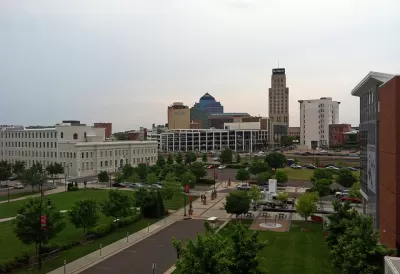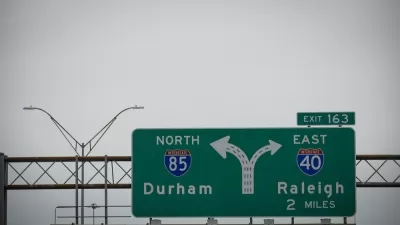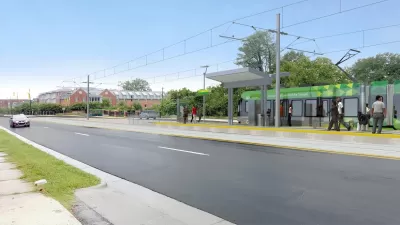Having the right mix of jobs in a local economy might be a predictor for future growth.

Writing on his blog, economist Jed Kolko looks at what the recently released Bureau of Labor Statistics' ten year projection for occupational growth means for cities. Essentially, the jobs most commonly found in large urban areas (i.e., actors, economists, elevator installers, medical scientists) are likely to see faster growth than those jobs concentrated in less dense areas. So, those metro areas that have a mix of jobs expected to grow in demand are likely to see their population growth continue. For those areas, with a concentration of less in demand jobs, you’ll grow a little slower.
Among all metropolitan areas with at least half a million people, Durham-Chapel Hill, NC, has the most favorable job mix for future growth, followed by New Haven and San Jose. Several of these top ten have large local tech industries, including Durham-Chapel Hill, San Jose, Boston, and Washington, DC. Many are among America’s most expensive markets.
Kolko does make a caveat that his analysis does not consider the specific economic intricacies of each market, nor does the analysis consider potential barriers to the future population growth of communities, such as the high cost of housing.
FULL STORY: Where the Fast-Growing Jobs Are

Planetizen Federal Action Tracker
A weekly monitor of how Trump’s orders and actions are impacting planners and planning in America.

Chicago’s Ghost Rails
Just beneath the surface of the modern city lie the remnants of its expansive early 20th-century streetcar system.

San Antonio and Austin are Fusing Into one Massive Megaregion
The region spanning the two central Texas cities is growing fast, posing challenges for local infrastructure and water supplies.

Since Zion's Shuttles Went Electric “The Smog is Gone”
Visitors to Zion National Park can enjoy the canyon via the nation’s first fully electric park shuttle system.

Trump Distributing DOT Safety Funds at 1/10 Rate of Biden
Funds for Safe Streets and other transportation safety and equity programs are being held up by administrative reviews and conflicts with the Trump administration’s priorities.

German Cities Subsidize Taxis for Women Amid Wave of Violence
Free or low-cost taxi rides can help women navigate cities more safely, but critics say the programs don't address the root causes of violence against women.
Urban Design for Planners 1: Software Tools
This six-course series explores essential urban design concepts using open source software and equips planners with the tools they need to participate fully in the urban design process.
Planning for Universal Design
Learn the tools for implementing Universal Design in planning regulations.
planning NEXT
Appalachian Highlands Housing Partners
Mpact (founded as Rail~Volution)
City of Camden Redevelopment Agency
City of Astoria
City of Portland
City of Laramie





























